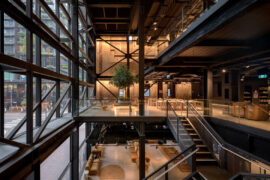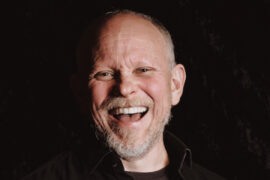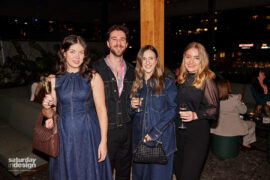With Pause Festival just around the corner, we spend five minutes with Sergio Brodsky who is presenting a talk on Urban Brand Utility: the regenerative strategy accelerating the evolution of smart cities.
Pause Festival returns to Melbourne for its eighth incarnation. Centered around innovation, creativity and tech, the program is set to inspire. One talk that will straddle business and design is by Sérgio Brodsky, who is speaking on ‘Urban Brand Utility: the regenerative strategy accelerating the evolution of smart cities’. We ask Brodsky a few questions ahead of his presentation.
Sérgio Brodsky: As a lifestyle superpower, crowned by the world’s most liveable city (Melbourne), Australia is certainly on the right track when it comes to sustainable urbanisation. Of course, there’s plenty of space for improvement to ensure citizens receive appropriate levels of essential services, which also means opportunities abound.
That said, unlike Singapore, Barcelona, Amsterdam and other cities and nations that had to go through major transformations, from policy to infrastructure, Australia is an incredibly lucky place with abundant resources, a manageable population and a strong service sector allowing a degree of advantage over other places.
Although cities only occupy 2 per cent of Earth’s landmass, that is where 75 per cent of consumption and an even higher percentage of brand communications concentrate. Because of increased demand for ever more comfortable lifestyles, the existing urban infrastructures have been feeling their “growing pains” for over a decade now.
From energy to education, health, waste-management or safety, cities’ services are struggling to keep up with their larger, older and “hungrier” populations. Therefore, the strategic opportunity is to reframe brand communications from the promotion of conspicuous consumption to becoming a regenerative force in the economy of cities.
That means, using brands’ touch points as more than mere messengers, but rather delivering public utility services. I coined it “Urban Brand-Utility”, an approach that can meaningfully and profitably reconnect people, brands, communications agencies and local government.
I see all these three industries intrinsically linked. Firstly, having a strong brand is paramount for business success. In an ever-commoditising business landscape, the ability to differentiate and create a shortcut is a critical advantage. By encoding meaning that resonates with people, brands make consumption choices easier.
Like magnets, strong brands attract our attention, casting a shadow over competitors. Then comes design, which is all about making your brand’s intangible value visible and able to solve problems that will make people’s lives easier, better or both.
As the perfect mix of art and science, architecture is able to reflect the specific values of a place and a time. This ability to create a sense of place and belonging is of utmost importance when crafting a brand or conceiving a design. Ultimately, the idea is to create a sense of affiliation and have people identifying with what you do allowing your [architecture, design or communications] business become a more integral part of their lives.
Everyone is responsible. Even a brand strategist like me. It’s easier to generalise and derive responsibility to certain institutions, but all these institutions are made up of people like you and me. Yet, the biggest challenge is to connect private, public and people in a constructive way.
It’s been a while since I started thinking about this intersection of urbanisation, consumption and communications and I’ll be sharing part of the answer during my talk at Pause Fest.
What I can say here is that brands have the legitimacy to support a cause, deliver utility and make a political stance that is not seen as opportunistic self-promotion. The general population does want brands to be more civically engaged and the public sector could certainly bring more ease to that. After all, as one of the tribunes asks the crowd in Shakespeare’s Coriolanus: “What is the city but the people?”
We think you’d enjoy reading about the new University of Newcastle campus that aims to revitalise the city.
Find out more about the program for Pause Festival here.
Sérgio Brodsky is an internationally experienced brand marketing professional, who has contributed to multiple award-winning campaigns. Brodsky is passionate about cities and culture and the role of brands and technology in society.
INDESIGN is on instagram
Follow @indesignlive
A searchable and comprehensive guide for specifying leading products and their suppliers
Keep up to date with the latest and greatest from our industry BFF's!

The undeniable thread connecting Herman Miller and Knoll’s design legacies across the decades now finds its profound physical embodiment at MillerKnoll’s new Design Yard Archives.

The London-based architect was recently in Australia for SyLon, an event broadcast simultaneously in Sydney and London to explore housing solutions across both cities.

Tzannes has completed work at The Brewery in Sydney’s Central Park, marking the culmination of an internationally significant adaptive reuse project.
The internet never sleeps! Here's the stuff you might have missed

Now in their 19th year, the Architecture & Design Sustainability Awards are Australia’s leading program dedicated to recognising innovation and excellence in sustainable architecture and design.

In Tasmania, Stuart Williams crafts his work with care and creates objects of desire with sustainability at their heart.

On 6th September 2025, Saturday Indesign went out with a bang at The Albion Rooftop in Melbourne. Sponsored by ABI Interiors, Woodcut and Signorino, the Afterparty was the perfect finale to a day of design, connection and creativity.